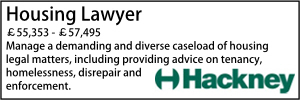Confusion over roles of council and tenant management organisation led to ineffective response to Grenfell fire, inquiry finds
- Details
The Royal Borough of Kensington & Chelsea was not told of the major incident at Grenfell Tower for more than an hour after emergency services declared it, and confusion over the roles of the council and its tenant management organisation (TMO) meant neither responded effectively.
Those are among findings from the first phase of retired judge Sir Martin Moore-Bick’s inquiry into the disaster, which focused on the events of the night when the fire killed 72 people.
He found that the police declared a major incident at 1.26am and the London Fire Brigade 30 minutes later, each without telling the other and with neither informing the council, which was finally alerted at 2.42am.
Sir Martin said: “This lack of communication was a serious failure to comply with the joint working arrangements and protocols designed for major emergencies in London.”
Joint working between the public services involved was supposed to be guided by a ‘joint doctrine’ .
Sir Martin said that while this document was “well-intentioned”, it used a “bewildering array of management language and acronyms, often at a high level of abstraction…I hope it is not unfair to say that it bears all the hallmarks of managerial conceptualism, designed to fulfil a statutory requirement in a vacuum, and does not appear to be based on the experience of those who operate on the incident ground in the real world.”
He noted the TMO, which managed housing for the council, had an emergency plan “but it was not activated and was in any case 15 years out of date”.
The council’s response relied on key information held by the TMO, so its emergency plan “was in certain respects ineffective” and Sir Martin criticised failures to make plans of the building available to the fire service earlier than 8am.
A section of the report on the actions of the council and the TMO indicated little understanding of how they should coordinate.
It said: “Both the TMO emergency plan and the RBKC contingency management plan were silent about how, if at all, they were intended to complement each other in the event of an emergency.
“There was no reference to the circumstances in which one or other plan would take precedence or whether they were intended to operate simultaneously and if so how.
“Given the extent of RBKC’s reliance on the TMO for information, the fact that the TMO emergency plan was not activated meant that in certain respects there was no emergency plan at all.”
The TMO emergency plan omitted nine flats and “contained materially inaccurate and out of date details of the numbers of vulnerable residents”.
Sir Martin warned in the inquiry’s second phase - which will deal with events leading up to the fire - he would try to discover “how it came about that the TMO allowed such a potentially important document to remain obsolete for so many years”.
The report found the assertion by TMO chief executive Robert Black that the organisation was a “spare part” on the night and had nothing else to offer was incorrect as it owned, or had access to, important information such as building plans and lists of residents “that had been repeatedly requested by the emergency services”.
Sir Martin said it should have been “a simple matter for the owners or managers of high-rise buildings to provide their local fire and rescue services with current versions of such plans” and recommended this should become a legal obligation.
Council leader Elizabeth Campbell, who was not in office at the time of the fire, said: “We fully accept the findings and the criticism of the council and we will be looking closely at the recommendations in the coming days to see how they can be implemented in our borough to make sure people are as safe as they can possibly be in their homes.”
Lord Porter, building safety spokesman at the Local Government Association, said: “The inquiry has made a fundamental error by examining the response to the fire before examining its causes. The consequence of this is to scapegoat the fire service while those responsible for the fire have yet to be exposed or held to account.
“It is clear that the fire was caused by a catastrophic failure of the building safety system in England.
“This has been proven by the number of public and private buildings with flammable material and the number of modern buildings which are behaving in unexpectedly dangerous ways when they catch fire. Reform of this broken system cannot come soon enough.”
Must read
Fix it fast: How “Awaab’s Law” is forcing action in social housing
Housing management in practice: six challenges shaping the sector
Why AI must power the next wave of Social Housing delivery
Sponsored articles
Walker Morris supports Tower Hamlets Council in first known Remediation Contribution Order application issued by local authority
Unlocking legal talent
09-12-2025 1:00 pm
11-12-2025 11:00 am







































